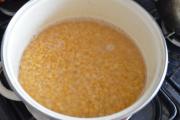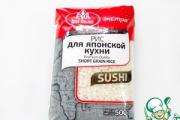Adjika from tomatoes and garlic - classic recipes for the most delicious adjika for the winter. Adjika "Ogonyok" - a simple step-by-step recipe with a photo of preparation for the winter without cooking. Spicy adjika light for the winter
Let's bring a touch of Caucasian exoticism to our gray everyday life - let's cook a spicy and aromatic adjika! I offer you today best recipes adjika without cooking for the winter. The preparation is very simple, it will not take much time, but what a taste it turns out! Just lick your fingers! Our recipes with photos will tell you how to make adjika easily and quickly, without heat treatment.
Let me tell you straight: what we often cook in our latitudes and proudly call "adjika" does not quite correspond to an authentic dish. A real Abkhazian spicy hot seasoning is prepared without tomatoes. But we will consider the best recipes in different versions: both more familiar to us, with tomatoes, and the classic Abkhaz seasoning, and the Georgian variation with walnuts and with cilantro. The main thing is to find the right ingredients, and the recipe is very simple everywhere.
Adjika raw from tomatoes with garlic

First, I will share with you a recipe for adjika from tomatoes with garlic and pepper without cooking. This is a variant of the seasoning adapted in our conditions. Tomatoes need to be selected ripe, fleshy, maybe slightly overripe. Such a preparation retains its taste and beneficial features fresh vegetables, has a strong antimicrobial effect, protects against colds.
Ingredients:
- 1 kg of tomatoes;
- 300 g bell pepper;
- 60 g hot red pepper;
- 60 g garlic (1 medium head);
- 60 g apple cider vinegar;
- 100 g sugar;
- 2-3 tsp salt.
Preparation:
- Wash the tomatoes, prepare them for chopping. To do this, scald them with boiling water, put them in cold water and remove the skin. Cut off the top.
- Wash the sweet pepper, remove the seeds and the stalk, cut it lengthwise into wide strips. Peel and wash the garlic.
- Cut off only the leg of hot pepper, leave the seeds. Combine tomatoes, sweet and hot peppers, garlic. Grind through a meat grinder or in a blender bowl.
- Add salt, sugar to chopped vegetables, pour in vinegar. Stir, let it brew for three hours to better dissolve the salt.
- We sterilize jars for adjika in advance, pour boiling water over the lids. Let's spread the adjika among the banks.
We will store it in the refrigerator. Here is a classic recipe without cooking tomato and garlic adjika.
Adjika Abkhazian: classic raw recipe

The present classic adjika raw for the winter is prepared without tomatoes. There are different options, I will tell you the simplest recipe. The seasoning is thick, tastes like fresh and very spicy.
Ingredients:
- 30 pcs. large pods hot pepper;
- 1.5 pcs. large heads of garlic;
- 2 tbsp. l. salt (not iodized);
- 2 tbsp. l. fenugreek blue;
- 1 tbsp. l. dill seeds;
- 4 tsp coriander;
- 2 tsp cumin (cumin).
Advice: I buy spices in the market from Abkhazian traders. You can buy ready-made Abkhaz mix for adjika.
Preparation:
- Wash hot peppers, peel off the tails. It is best to carry out this operation with gloves.
- We peel the garlic, disassemble it into cloves, wash it. Mix pepper and garlic, grind them in a blender. Place in a large bowl.
- Dry the cumin and coriander in a pan over low heat, stirring occasionally, until a strong aroma appears. Then mix them with dill seeds and fenugreek, grind all the spices in a food processor or coffee grinder. If desired, you can simply crush in a mortar with a pestle.
- Combine the pepper mixture with spices, add salt, stir well. We put it in jars scalded with boiling water. Close with clean lids.
Store in a cellar or refrigerator.
Delicious "Vigorous" raw adjika with horseradish

Cooking adjika at home from tomatoes without boiling has many variations. I will share with you a recipe for making a hot seasoning with horseradish and parsley.
Ingredients:
- 2 kg of red tomatoes;
- 10 pieces. medium-sized red sweet peppers;
- 3-4 pcs. hot pepper;
- 100-200 g horseradish root;
- 160 g garlic (2 large heads);
- 100 g sugar;
- 2-3 tsp salt;
- 70 g of table vinegar;
- 1 bunch of dill;
- 1 bunch of parsley.
Preparation:
- Scald tomatoes and bell peppers with boiling water. After cooling, remove the skin from them.
- Cut the horseradish into thin slices, hot pepper into rings. Divide the garlic into wedges. We pass all the vegetables through a meat grinder or grind in a blender.
- Finely chop the washed parsley and dill, add to the tomato-pepper mixture. Pour in sugar, salt, pour in vinegar. Mix well.
- Pour into a three-liter bottle, close with a lid. Adjika with pepper and herbs is ready. We keep it in the cold.
Note: When stored for a long time, the seasoning may ferment slightly. Don't be afraid of it - stir it to release the gas. The blank will acquire a pleasant aftertaste of pickled tomatoes.
Adjika from prunes

I love to stock up interesting recipes, and now I suggest one of them. The seasoning is prepared from plums without boiling, with tomato paste and bell pepper. Prunes give the dish a pleasant sour taste.
Ingredients:
- 1 kg fresh prunes;
- 1 kg of bulgarian pepper;
- 2-3 heads of garlic;
- 500 g tomato paste;
- 1-1.5 pod of hot pepper;
- 1.5 tbsp. l. salt.
Preparation:
- Wash the plums, remove the seeds from them. Washed bell pepper wash, cut, clean from seeds.
- Cut the washed hot pepper into rings. We clean the garlic, wash it. We mix everything and grind it with a blender (or pass it through a meat grinder).
- Pour into a bowl, add salt, add tomato paste, mix thoroughly.
- We put it in clean jars, close with lids.
- Adjika with prunes and bell peppers is ready without cooking. Thanks to plums and tomato paste, we cooked it without vinegar.
It is impossible to imagine the best adjika recipes without cooking for the winter without detailed videos. Here is one of them, everything is very easy and understandable.
No-boil recipe with aspirin

If you are still afraid that the raw preparation for the winter may explode, you can play it safe and cook adjika with aspirin. The classic proportion is one aspirin tablet for half a liter of ready-made seasoning. In this amount, the medicine will not do any harm to your body.
Ingredients:
- 4 kg of tomatoes;
- 2 kg of bulgarian pepper;
- 200 g of garlic;
- 3 pcs. hot pepper;
- 200 ml vinegar 9%;
- 3 aspirin tablets;
- Spices for adjika - to taste.
Preparation:
- Dry the washed vegetables on a paper towel or napkin. Scald tomatoes and bell peppers with boiling water, then pour cold water. Carefully remove the skin from them.
- Cut into slices and mince (or blender).
- Wash hot peppers, remove seeds. Wash the garlic too, peel the slices. Pass hot pepper and garlic through a meat grinder, mix with tomato-pepper mass. Then pour in the vinegar.
- Crush the aspirin with a pusher in a mortar or saucer, add to the adjika and mix carefully. Cover the blank with gauze, let it stand for about a day so that all the ingredients are well dissolved.
- In the meantime, we will sterilize the jars and lids. Stir the finished adjika again, put it in jars with a ladle, and screw it on with lids. Can be closed with plastic lids.
We store the workpiece in the basement or refrigerator.
Georgian adjika with chili

This is a popular Georgian spice, without cooking, spicy, with peppers and nuts. It will take a lot of chili peppers.
Tip: It is better to cook the seasoning with gloves.
Ingredients:
- 1 kg dry chili peppers in pods;
- 200 g of walnuts (preferably raw, not roasted);
- 60-70 g coriander seeds;
- 100 g of suneli hops;
- 1 bunch of cilantro greens;
- 1 bunch of parsley;
- 300 g of garlic;
- 300 g of coarse salt;
- A little cinnamon (to taste).
Preparation:
- We wash the red chili peppers and soak for 1 hour in cool water. Then we drain the water. Dry the pepper, remove the seeds.
- Cilantro and parsley greens also need to be washed and dried. We clean the garlic, divide it into slices, wash it.
- We pass chili peppers, garlic, nuts through a meat grinder. You can repeat this operation two or three times. If a lot of liquid is released, it is better to drain it.
- Then transfer the mixture to a deep bowl. Add finely chopped parsley and cilantro, salt, coriander and suneli hops to it. Stir well.
- Cover and leave at room temperature for three days. Do not forget to stir twice a day.
- Then we transfer the hot seasoning to dry jars, close with lids. Adjika is perfectly stored in the refrigerator or cellar for many months.
Note: It is good to grease meat or chicken with this seasoning before baking in the oven.
Sharp seaming without vinegar

People also call it "Ogonyok" - for its bright red color and burning warming taste. The recipe is no vinegar and the chili is a natural preservative here. My friends store such a seasoning in a room, a pantry. They say it doesn't spoil. But I don't risk it and keep it in the refrigerator.
Ingredients:
- 3 kg of ripe tomatoes;
- 1 kg of bulgarian pepper;
- 400 g hot chili peppers;
- 2 large heads garlic;
- 6 tbsp. l. salt.
Preparation:
- We wash the tomatoes, dry them, cut the stalks out of them. Cut crosswise from above, scald with boiling water and immerse in cool water for a minute. Then we take out and easily peel off the skin.
- My Bulgarian pepper, clean from seeds, cut into strips. I also wash chili peppers, cut off the tails, remove the seeds, cut into rings.
- We clean the garlic, divide it into teeth, wash it, cut it into thin slices.
- Grind all vegetables through a meat grinder or blender until puree. Add salt and mix. We leave it to brew for three days. Stir the seasoning twice a day.
- Then put the adjika in clean jars, close with plastic lids. We put it in the refrigerator for storage. A spicy aromatic seasoning is ready!
As you can see, the best recipes for adjika without cooking for the winter are very easy, cooking with them is fun and pleasant, and eating dishes with aromatic seasoning is a sheer pleasure! Treat yourself and your family with delicious adjika. Good appetite!
Traditional Abkhazian adjika is prepared on the basis of hot pepper, garlic, salt and herbs.
We propose not to be limited to only one classics with such a variety of ingredients for searing seasonings. Check out our easy proven recipes!
How to cook adjika: 3 rules
So that the color of adjika is rich and the consistency is thick, choose the brightest and fleshy vegetables.
Use salt better than rock salt, since it is sodium chloride in its pure form that is a powerful preservative, and iodized salt can cause fermentation and softening of vegetables.
A special pungent taste of adjika is given by hot pepper unrefined from seeds. If the seed pods are removed from the pods, the taste of the sauce is softer. And don't forget to use rubber gloves to avoid scalding from the pepper!
Green adjika
Photo: dinasdays.com Visiting card of Abkhazia. Such adjika is served with many dishes and, of course, with lamb roasted on a spit.
What do you need:
- 6-8 large bitter green peppers
- 1 head of garlic
- 1 bunch of cilantro
- 1 tbsp. spoon of salt
How to cook green adjika:
Cut the pepper into small pieces, without peeling the seeds.
Grind the pepper with garlic in a mortar or mince it several times.
Add salt, mix and leave to brew for 15–20 minutes.
The incomparable presenter of the program Lara Katsova shared with us her family recipe for adjika, turn on the video!
Russian adjika "Ogonyok"

Photo: natalielissy.ru To borscht, salted bacon with black bread and boiled potatoes with herring - adjika is ideal for traditional Russian dishes. It can be used to prepare sauces for meat and even dressing for pickle and cabbage soup.
What do you need:
- 1 kg of tomatoes
- 1 kg sweet pepper
- 400 g garlic
- 200 g hot pepper
- 150 g parsley root
- 1 tbsp. a spoonful of salt (for storing adjika more than 1-2 months, double the amount of salt)
How to cook Russian adzhika "Ogonyok":

Hot adjika with basil

Photo: natalielissy.ru Sharp! Very spicy! Even sharper! The versatility of the recipe is that this adjika can be used not only for meat dishes but also for sandwiches, sauces, soups and even pasta.
What do you need:
- 500 g hot red pepper (you can add a couple of green peppers)
- 400 g garlic
- 2 bunches of green basil
- 1 bunch of cilantro
- 1 bunch of parsley
- 2 tbsp. tablespoons of salt
How to cook hot adzhika with basil:

Nut adjika

Photo: thinkstockphotos.com Adjika is not adjika, if there are no nuts in it, they think so in the Caucasus. Subtle pleasant aroma, thick consistency and rich spicy taste- that's what makes adjika real!
What do you need:
500 g tomatoes
400 g walnuts
200 g red bell pepper
3 heads of garlic
2-3 hot peppers
1 bunch of cilantro or parsley
4 tbsp. refined spoons sunflower oil
2 tbsp. tablespoons of vinegar 9%
1 tsp salt
How to cook nut adjika:
Peel the bell peppers from seeds, wash and dry the herbs.
Cut the stalks of tomatoes.
Chop tomatoes, peppers, garlic, nuts and herbs in a blender or mince twice.
Add sunflower oil, vinegar and salt to the finished mass.
Stir and serve immediately!
Gorloder, or Siberian adjika with horseradish

Photo: loverofcreatingflavours.co.uk The recipe from Siberia is quite capable of competing with the hot sauces from sunny Abkhazia. The basis of the gorloder is the vigorous horseradish root. Suitable for meat and fish dishes, corned beef, and especially for barbecue and homemade grilled sausages.
What do you need:
- 500 g tomatoes
- 50 g horseradish root
- 50 g garlic
- 1.5 teaspoons of salt
- 1 teaspoon sugar
How to cook gorloder, or Siberian adjika with horseradish:
Chop the tomatoes, garlic and horseradish in a meat grinder.
Combine all ingredients, add salt and sugar, mix.
Arrange in sterilized jars, roll up.
Adjika from bell pepper

Photo: thinkstockphotos.com If you don't like the fiery seasoning, make a lighter version of this sauce with a sweet and sour taste and a light peppercorn. Such adjika goes well with baked or boiled meat, poultry, fish, potatoes baked in foil and fried toasts.
What do you need:
- 1 kg sweet red pepper
- 300 g garlic
- 4-6 red hot peppers
- 50 ml vinegar 9%
- 4 tbsp. tablespoons of sugar
- 1 tbsp. spoon of salt
How to cook adjika from bell pepper:
Peel sweet peppers from seeds.
Pass the pepper together with garlic and hot pepper through a meat grinder.
Add salt, sugar, vinegar, mix and leave to infuse for 3-4 hours.
Then put in sterilized jars and store in a dark, cold place.
Adjika with apples

Photo: thinkstockphotos.com An improved and adapted recipe for adjika for poultry or grilled fish. To give the sauce a more delicate flavor, you can cook it without hot peppers or reduce the amount.
What do you need:
- 1 kg of tomatoes
- 500 g red bell pepper
- 500 g sour apples
- 300 g carrots
- 200 g garlic
- 50 g hot pepper
- 200 ml of refined sunflower oil
- 1 bunch of cilantro
- 1 bunch of parsley
- salt to taste
How to cook adjika with apples:
Peel and grind all vegetables together with herbs in a blender or meat grinder.
Add salt and sunflower oil.
Bring to a boil and simmer over low heat for 2.5 hours.
Transfer to sterilized jars and roll up.
Adjika with plums

Photo: wolvesinlondon.com Delicate and soft adjika with plums goes well with game, boiled potatoes and baked vegetables, chicken meatballs and pork chops.
What you need:
- 500 g plums (choose not sweet and even sour plums)
- 500 g bell pepper
- 2 heads of garlic
- 2 hot peppers
- 1 tbsp tomato paste
- 100 g sugar
- 2 tsp vinegar 9%
- 2 tbsp. tablespoons of salt
How to cook adjika with plums:
Peel bell peppers from seeds, plums - from seeds.
Pass through a meat grinder Bell pepper, plums, garlic, hot peppers with seeds.
Put chopped ingredients in a saucepan, add tomato paste, salt and sugar.
Bring to a boil and cook, stirring occasionally, over low heat for 30–40 minutes.
Add vinegar 2 minutes before the end of cooking.
Ready mix transfer to sterilized jars, roll up, turn over and leave until it cools completely.
Baked pumpkin adjika

Photo: thinkstockphotos.com Baked vegetables give this adjika a surprisingly delicate texture, and pumpkin - an unusual and at the same time unobtrusive aroma. Light, spicy, moderately spicy, with a subtle sourness.
What do you need:
- 500 g pumpkin
- 200 g apples
- 200 g bell pepper
- 200 g onions
- 1 lemon
- 1 head of garlic
- 1 bunch of basil
- 1 bunch of cilantro
- 50 ml refined vegetable oil
- 1 hot pepper
- 1 tsp salt
How to cook baked pumpkin adjika:
Peel the pumpkin and onion, remove the seeds from the apple and pepper. Cut the pumpkin and onion into pieces of any size.
Wrap pumpkin, onions, apples and peppers in foil, bake at 200 ° C for 35 minutes. Then peel the apple and pepper.
3. Grind all baked vegetables in a blender.
Grind the garlic, lemon and herbs in a blender until smooth.
Combine vegetables with lemon dressing, stir and serve immediately.
Adjika from pickled cucumbers

Photo: greenishthumb.net Are there any pickles left from last year's stocks? Cook out of them spicy sauce! The beauty of the recipe is that this adjika can be made in a hurry at any time.
What do you need:
- 500 g pickles
- 1 head of garlic
- 3 tbsp. tablespoons of tomato paste
- 2 tbsp. tablespoons of refined sunflower oil
- Apple vinegar- taste
- 1 pinch of ground black pepper
- 1 pinch of ground red pepper
How to cook adjika from pickled cucumbers:
Peel and grate cucumbers or chop in a blender. If there is a lot of liquid, drain.
Pass the garlic through a press.
Combine cucumbers, garlic, tomato paste, vegetable oil, vinegar and spices.
Stir and refrigerate for 1-2 hours.
"Cobra", "Ogonyok", "Horseradish", "Hrenoder", "Horseradish", "Thistle" and even "Vyrviglaz" - what names have not found the appetizer among the people, the basis of which are tomatoes and horseradish. Judging by the name, it should be sharp and even very, very sharp. But in fact, this is not always the case - inventive housewives have found such recipes when the dish turns out to be moderately spicy. Of course, it is still undesirable for people with stomach ulcers to use this, but, as they say, there are options.
A bit of history
In Russia, all recipes are adapted to suit their tastes. Photo: www.globallookpress.com
Many researchers say that all variants of "horseradish" are Caucasian adjika adapted to Russian cuisine. This word, translated from Abkhazian, means "pepper salt". They say that it appeared thanks to the Abkhaz shepherds. In the spring, when the flocks were driven into the mountains, to nibble the young grass, the owners gave out salt to the shepherds, but it was intended ... for the sheep. The sheep, having eaten salt, ate grass from thirst, so they quickly gained the necessary weight.
And so that the shepherds did not steal salt (the product was once scarce and therefore very expensive), the owners of the flock added hot pepper to it. However, the shepherds learned to use this salt, moreover, they improved it with the help of traditional Caucasian spices: hops-suneli, cilantro, etc. This is how adjika was born.
Apparently, not everyone liked it due to its sharpness, or, again, some mistress had nowhere to put the tomatoes, and they "diluted" Caucasian adjika with them. The recipe took root in Russian cuisine and scattered across cities and villages. But now there are so many variations of it! We tried to choose the most uncomplicated and common ones.
An important nuance: when preparing the seasoning, you should follow the "safety precautions": protect your hands and eyes. To do this, you need gloves: if you don't like kitchen gloves, you can buy thin, medical gloves at the pharmacy, since your hands burn both red pepper and horseradish. In order not to cry from the pungent essential oils when twisting horseradish, our hostesses came up with the idea of putting on and firmly fixing (with an elastic band for money, for example) cellophane bags both on the neck and on the dispenser ring of the meat grinder. Well, and one more note: horseradish very quickly loses its aroma phytoncides, so it is better to grind it at the very last moment before putting it into an almost ready-made adjika.
The easiest "cold" recipe

Lecho and horseradish are favorite Russian snacks. Photo: From personal archive / Olga Korobova
Many advise to cook the sauce without boiling, then, of course, it retains all the useful substances, but it should be stored exclusively in a cold place (cellar, for example). Therefore, you can first try, master, so to speak, a basic recipe, and then proceed to those that are more complicated. Always remember that you can proportionally change the number of products up / down.
In those recipes where cooking is not provided, the cooking technology is about the same - grind everything with a meat grinder. Therefore, having painted it in advance at the beginning, then we will not do this. Where nuances appear, we describe them in detail.
Ingredients:
- tomatoes - 5 kg;
- hot pepper - 60-100 g;
- garlic: 200 g;
- sugar - 1 glass;
- salt - 10-15 tsp;
- table vinegar (9%) - 5 tbsp. l.
How to cook:
Wash and clean all ingredients. Pass through a meat grinder to get a homogeneous mass. Add sugar, salt, vinegar, mix thoroughly. Let it brew for a day - and you can eat!
"Ogonyok" with sweet pepper

You will often find this seasoning in street markets. Photo: AiF / Alexandra Gorbunova
This seasoning will be much less spicy, even sweet, if hot peppers are eliminated from the ingredients altogether.
Ingredients:
- tomatoes - 1 kg;
- bell pepper (red - so that the color does not change) - 1 kg;
- garlic - one head;
- salt - 2 tsp
How to cook:
In the same way as in the first recipe.
Adjika without cooking

We take the most ripe tomatoes. Photo: pixabay.com
There are more ingredients, but little labor. Horseradish will add pungency and unique aroma to your appetizer, pepper - bright bitterness. You can "play" with the amount of pepper - for example, 50x50 or 20x80.
Ingredients:
- tomatoes - 2 kg;
- sweet pepper - 10 pods;
- bitter pepper - 5 pods;
- horseradish root - 3-4 pcs.;
- parsley and dill 1-2 bunches;
- garlic - 200 g;
- sugar, salt - 4 tbsp. l .;
- vinegar 9% - 1 tbsp. l.
How to cook:
In the same way as above: peel, grind, put in jars and refrigerate.
Mild adjika with plums

Garlic will add flavor to any seasoning. Photo: pixabay.com
Plum sauce in the Caucasus is a well-known tkemali. But here it is slightly modified, so we will consider it adjika. What kind of plum to take, everyone decides to his taste. Ideally, of course, sweet and sour, but sweet prunes in combination with spicy ingredients will give their own flavor.
Ingredients:
- tomatoes - 3.5 kg;
- sweet pepper - 1 kg;
- carrots - 1 kg;
- plum - 1 kg;
- garlic - 100 g;
- vegetable oil - 0.5 cups;
- aspirin - 10 tablets.
How to cook:
Wash, peel everything, remove the stalk and seeds from the pepper, and the seeds from the plum. Pass all fruits and vegetables through a meat grinder. Add garlic squeezed out through a press, salt, pepper to taste, aspirin ground into flour (it plays the role of a preservative, many still salt with it, not recognizing vinegar), mix well.
Adjika with carrots and apples
This recipe is more complicated, since the cooking process is included. But this winter harvesting, which will delight you until spring with its pleasant, slightly even sweetish taste.
Ingredients:
- tomatoes - 2.5 kg;
- sweet pepper - 500 g;
- apples (sweet and sour) - 500 g;
- carrots - 500 g;
- garlic - 120 g;
- hot pepper - 75-100 g;
- parsley, dill, cilantro - 50 g each;
- vegetable oil - 250 g;
- vinegar (9%) - 9 tbsp. l.
- salt, black pepper - to taste.
How to cook:
Peel apples from seeds. Turn everything except greens through a meat grinder. Add vegetable oil, salt and black pepper. Pour into a saucepan with a thick bottom and walls, place on the stove. After boiling, reduce heat to very low and cook for about 2 hours. Add chopped herbs and vinegar 5 minutes before the end of cooking. Arrange in pre-sterilized banks, roll up. Turn over, leave to cool completely.
And finally, cooking a snack using kitchen gadgets.
Fuckin 'in the multicooker

Horseradish root is an indispensable component of a hot seasoning. Photo: AiF / Alexandra Gorbunova
Ingredients:
- tomatoes - 1 kg;
- Bulgarian pepper - 300 gr;
- garlic - 1 head;
- horseradish root - 200 gr;
- salt, sugar - 1.5 tbsp each l .;
- vinegar 9% - 2 tbsp. l.
How to cook:
Wash everything, peel the seeds and stalks of pepper. Grind vegetables in a meat grinder or blender, with tomatoes and peppers in one container, and garlic with horseradish in another. Put a mixture of tomatoes and peppers in a multicooker bowl, add sugar and salt. Turn on the "Stew" mode, cooking time - 30 minutes. Add horseradish and garlic 5-7 minutes before cooking. After the signal, add vinegar, stir and pour the hot sauce into sterilized jars; roll up, turn over until it cools.
Nothing enhances the taste of vegetables, meat or fish dishes the more refined, well-chosen sauce, the more if it is homemade.
And one of the most famous and popular vegetable sauces- this is, of course, adjika "Ogonyok", the recipe of which we propose to try today. The bright taste of ripe tomatoes, the light sweetness of paprika and the pleasant pungency of hot pepper will make this seasoning indispensable in your kitchen.
As in any national recipe, there is a great variety of the only correct options for preparing adjika. With or without tomatoes, with zucchini, apples, garlic, herbs or other ingredients. But the most popular, of course, is the classic spicy.
In addition to its excellent taste and summer aroma, this snack is also very healthy, because it does not contain vinegar and vegetables are not cooked. And despite this, adjika "Ogonyok" is well stored in the refrigerator for a long time. So we advise you to prepare more at once, because this is not only an excellent sauce for meat or fish, but also an excellent base for pizza, bolognese sauce or dressing for tomato soup.
Adjika recipe "Ogonyok"

Ingredients
- - 1 kg + -
- - 1 kg + -
- - 1 head + -
- - 2-3 pcs + -
- - taste + -
How to cook adzhika "Ogonyok"
The most important thing in Ogonyok adjika is vegetables. We are not lazy to spend enough time choosing the best ones. They should not be dented or damaged, because we will not subject them to heat treatment.
- Wash the ripe fleshy tomatoes and remove the stalk. If the tomatoes are caught with a thick skin, pre-blanch them - we make several shallow cuts and lower the vegetable in boiling water for 30 seconds. We take it out and immediately transfer it to cold water. When the tomatoes have cooled down, the skins will peel off easily.
- Cut the bell pepper in half and remove the seeds. We choose it to our taste, but remember that green can spoil the color of the finished adjika.
- Wash the garlic and peel it from the tough skin. Young garlic is usually spicier but also more flavorful, so adjust the amount to your liking.
- Rinse hot peppers from dust. Depending on the variety, this pepper has a different degree of pungency.
- Grind tomatoes and bell peppers with a blender or meat grinder. We try to chop them quite coarsely so that the texture is felt. Salt to taste.
- We begin to add garlic and hot peppers, they also need to be chopped. The hottest part of the pepper is the seeds. If you need to make the adjika softer, remove the seeds beforehand, if we need a real "light", grind them together. We taste the quantity to our taste.
- When the desired pungency and consistency is reached, mix the mixture and leave it in the refrigerator to infuse for a couple of days.
- After two days, we sterilize the jars and do not forget about the lids. You can simply put the lids in boiling water for 2 minutes, and put the cans on water bath, or in an oven preheated to 200 degrees for 10 minutes, or in a microwave. In the latter case, do not forget to pour some water into them so that the cans do not burst.
- Put adjika in sterilized and chilled jars so that there is no room on top for excess air. We roll up the cans and put them in the refrigerator.
In a day, the adjika will be ready, but like any vegetables, it will become tastier if it stands for at least a week, and the components are saturated with each other's juices and aroma.
That's all the "difficulties" of cooking. We are sure that now adjika "Ogonyok" will become one of your favorite homemade snacks. This recipe is very simple and quick, and the result will surprise you and your guests. Serve adjika with meat or fish, although it will be delicious even with hot white bread. Bon Appetit!
Adjika Ogonyok completely preserves not only vitamins and minerals without cooking, but also biologically active substances, which are always destroyed during heat treatment. It turns out to be moderately sharp and thick.

Cream tomatoes are best for cooking, as they do not produce much juice. Thanks to this, the sauce will turn out to be moderately thick. You can use not only ideal fruits, but also slightly damaged or soft ones.
Peel hot peppers carefully. Gloves must be worn before cutting it open and removing seeds. Burning substances in its composition can irritate and burn the skin. If you do not wash your hands and rub your eyes in time, then irritation will immediately begin, causing painful sensations. In the recipe, products are chopped in a meat grinder. If not, you can use a blender, food processor, or juicer. As additional ingredients, you can add dill, bell pepper, parsley, cilantro to the composition.
Advice! To keep adjika "Ogonyok" as long as possible in winter, the cans must be sterilized and the lids must be boiled for five minutes.
Ingredients
Servings: - +
- ripe tomatoes 1.5KG
- table salt 30 g
- hot peppers 1 PC
- garlic 100 g
- granulated sugar 20 g
Calories: 30.74 kcal
Proteins: 1.35 g
Fats: 0.21 g
Carbohydrates: 6.2 g
50 minutes Video Recipe Print
Rinse the tomatoes. Wipe each fruit with a napkin. Water entering the adjika will speed up the fermentation process, and the sauce will not be able to be stored for a long time. Cut off damaged parts. Peel the garlic cloves.
To make Adjika Ogonyok tender and uniform, you need to cut the core of each tomato.
The hottest part of the hot pepper is the veins and seeds. It is better to cut the fruit in half. Cut off the white parts and rinse from the seeds. If you want to cook a more vigorous adjika Ogonyok, then this item should be skipped.
Prepare a deep saucepan and place it under the meat grinder attachment. Skip half the tomatoes, then the garlic with hot pepper and again tomatoes. It is better to use green peppers, as they are not so vigorous. For lovers of spicy dishes, it is better to purchase red fruits.
Sprinkle adjika Spark with salt. Sweeten. To stir thoroughly. At this point, you can add to improve taste grated horseradish root, hops-suneli or black pepper.
Arrange in prepared jars and close tightly with lids.
Adjika Ogonyok can be stored in the refrigerator, closet or basement, where the temperature is kept within + 4 ... + 8 ° С. The shelf life is no more than three months. Without heat treatment, the fermentation process will quickly begin, especially if you leave adjika Ogonyok at room temperature. For some time, salt inhibits the growth and reproduction of microorganisms that cause the formation of gases in the workpiece.
Preparing a large portion of Adjika Ogonyok, part can be poured into jars and left in the refrigerator for daily use. If you pour the sauce from the top 1 cm to the edge of the jar vegetable oil, then adjika will last for about 4-5 months. For longer storage, you can transfer the workpiece to containers and send it to the freezer. It is allowed to thaw the product gradually in the refrigerator compartment, and its taste will not differ in any way from the freshly made sauce.
Adjika Ogonyok, with regular use, improves digestion and metabolism, strengthens immune system... Due to the spice, the seasoning should not be eaten in large quantities. It is best combined with meat, chicken, vegetables, potatoes and rice. Add to soups, stews, homemade savory pastries, and pizzas.













